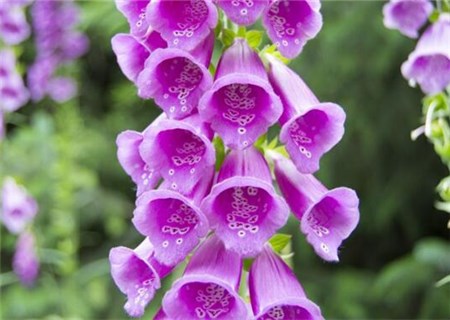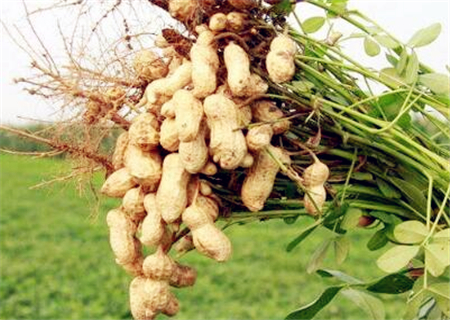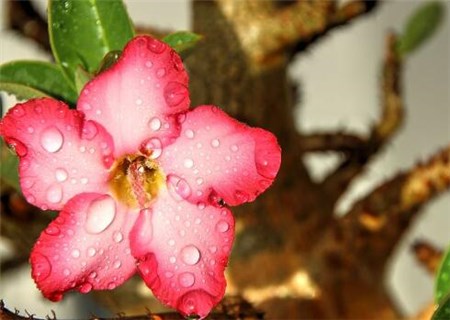When will Digitalis (also known as Digitalis) seeds be sown? What are the planting methods? What is the difference between Lu Binghua and Lu Binghua?
Digitalis: alias Digitalis, poisonous herb, purple Rehmannia, hanging bell flower, originated in the mountains of central and southern Europe. At present, a large number of plants have been cultivated in Zhejiang, Shanghai, Jiangsu and Shandong. Do you know when the seeds of Digitalis will be sown? What are the planting methods? What is the difference between Lu Binghua and Lu Binghua? According to Uncle Chen, a big grower of Digitalis, the best sowing time for Digitalis seeds is from March to May and August to September every year, during which the germination rate of Digitalis seeds is the highest and grows best.

I. planting method of Digitalis
1. Soil: Digitalis is suitable to grow on moist and well-drained soil.
2. Watering: Rehmannia glutinosa likes to be semi-wet, slightly resistant to drought and afraid of waterlogging, watering should be appropriate, and it should be thoroughly watered when it is dry during the growing period, and slightly dry and slightly moist in winter.
3. Illumination: Rehmannia glutinosa is also resistant to semi-shade, which can be planted in sunny places or semi-shady places where there is enough scattered light. In the flowering season, light can be increased appropriately, taking into account the quality and quantity of flowers. The length of sunshine will not affect flowering.
4. Temperature: the temperature adaptation range of Digitalis growth is 12 ℃-19 ℃, but the ideal night temperature in the final stage is 12 ℃-16 ℃. When plants are planted under the condition of a certain protective cold bed, they can grow high-quality plants and spikes of flowers.
5, fertilization: sex like fertilizer, the growth period of about 20 days to apply full-effect organic liquid fertilizer, nitrogen, phosphorus and potassium compound fertilizer or 0.2% potassium dihydrogen phosphate solution.
6. insect diseases: Fusarium wilt, mosaic disease and aphids often occur in Rehmannia glutinosa. When causing the main disease, remove the diseased plant in time and disinfect it with lime. When insect pests occur, it can be sprayed with 2000 times of omethoate EC, which can also reduce the incidence of mosaic disease.
What is the difference between Rehmannia glutinosa and Lubinghua
1. Digitalis
Alias Rehmannia glutinosa, poisonous herb, purple Rehmannia, hanging bell flower, refers to the top flower, Admiralty, heart grass, poisonous herb, purple hair Rehmannia, bell flower.
Herbs biennial or perennial, all densely shortly hairy. Root leaves ovate to ovate-lanceolate, margin obtusely dentate, long stalked. In the spring of 2 ~ 3 years, the flower stem was drawn from the center of the leaf cluster, which was as high as 1-1.5 m. The cauline leaves were long ovate, denticulate on the margin, short stalked or subsessile. Raceme terminal, Corolla campanulate, pendulous, inclined to one side, purplish red, with dark purple spots on the inside. Capsule conical, seeds fine. The flowering period is from May to June and the fruiting period is from June to July. Native to the mountains of central and southern Europe. At present, a large number of plants have been cultivated in Zhejiang, Shanghai, Jiangsu and Shandong.
It is said that the bad leprechaun gave the Rehmannia flowers to the fox and asked the fox to put the flowers on his feet to reduce the sound of his footsteps in the foxglove, so Digitalis has another name-fox gloves.
2. Lu Binghua:
Also known as "lupin", it is a plant of the genus Rosaceae, Leguminosae and Lupin. Stems ascending or erect, basally branched, entire plant covered with brown or rust-colored hirsute. Racemes terminal, shorter, inflorescence axis thickened, still longer than compound leaves, flowering from March to May, fruiting from April to July. Stems ascending or erect, basally branched, entire plant covered with brown or rust-colored hirsute.
Leaves palmately compound, 5-8 leaflets; petiole much longer than leaflets; stipules subulate, lanceolate to oblanceolate, up to 1 cm long, leaflets 10-17, thick, mostly basal, lower half connected with petiole; leaflets Obovate, oblanceolate to spatulate, 15-70 mm long and 5-15 mm wide, apex obtuse or acute, mucronate, base attenuate, leaf surface smooth, abaxially hirsute.
Racemes terminal, short, 5-12 cm long, not longer than compound leaves, inflorescence axis slender, densely composed of hundreds of butterfly-shaped florets, lower flowers alternate, upper flowers irregularly whorled, flowers 10-14 mm long; bracts subulate, 3-4 mm long, hairy; pedicel very short, 1-2 mm long; calyx 2-lipped, hirsute, lower lip longer than upper lip, lower lip with 3 deep lobes, upper lip shallower, fruit persistent Corolla blue, flag and keel with white markings. In addition to the common goose yellow, red, there are light blue, pink, brick red, white and two colors and other colors, emitting a strong refreshing fragrance.
3. How to distinguish
The difference between Digitalis and Lu Bing flower: leaves and flowers are different, Lu Bing flower is compound leaf, Digitalis single leaf. Lu Binghua is a typical leguminous flower, while Digitalis is like a small clock.
Simple identification:
Digitalis: petals facing down with spots inside
Lu Binghua: the petals are facing up, without spots inside.
Time: 2019-03-17 Click:
- Prev

How many jin of peanuts can be produced by planting one mu of land? What is the net profit income?
Peanut is a kind of nut which is rich in yield and widely eaten in China, also known as everlasting fruit. So how many jin of peanuts can be produced by planting one mu of land? How much is the net profit income? The yield of peanut is different under different geographical conditions, and the plot with fertile soil can produce 800kg to 1000jin per mu.
- Next

What are the breeding methods and matters needing attention of desert roses with flowers shaped like trumpets? How can the root become bigger?
Desert rose, also known as Tianbao flower, is not a rose growing in desert areas, nor is it closely related to or similar to roses. It is drought-resistant, beautiful when it is in full bloom, and is often cultivated and ornamental. So do you know the breeding methods and precautions of desert roses? How can the roots get bigger?
Related
- Fuxing push coffee new agricultural production and marketing class: lack of small-scale processing plants
- Jujube rice field leisure farm deep ploughing Yilan for five years to create a space for organic food and play
- Nongyu Farm-A trial of organic papaya for brave women with advanced technology
- Four points for attention in the prevention and control of diseases and insect pests of edible fungi
- How to add nutrient solution to Edible Fungi
- Is there any good way to control edible fungus mites?
- Open Inoculation Technology of Edible Fungi
- Is there any clever way to use fertilizer for edible fungus in winter?
- What agents are used to kill the pathogens of edible fungi in the mushroom shed?
- Rapid drying of Edible Fungi

